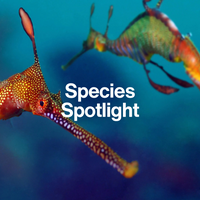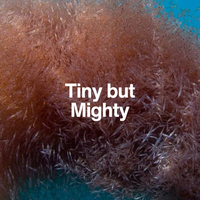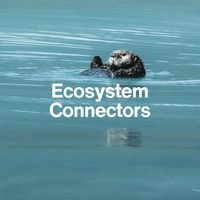The Ocean’s Social Genius
Bottlenose Dolphin

Intelligent, playful, and deeply connected—this marine mammal redefines what it means to be wild and aware.
Introduction
A Mind Behind the Smile
The bottlenose dolphin (Tursiops truncatus) is one of the most recognisable and charismatic animals on Earth. With its curved mouth that mimics a smile and its graceful leaps through the waves, it has become a global symbol of ocean life and emotional intelligence.
But behind that familiar face lies something even more remarkable: a complex social brain. Bottlenose dolphins are not just smart—they’re self-aware, cooperative, and capable of forming lifelong bonds.

What Makes It Iconic
Brains, Bonds, and Behaviour
Bottlenose dolphins are renowned for their advanced cognition. They use tools, recognise themselves in mirrors, and even have signature whistles—unique names for each individual.
They live in dynamic social groups called pods and show behaviours that mirror human traits: cooperation, play, teaching, grief, and even culture.
Whether working together to hunt or surfing waves for fun, dolphins show us that intelligence in the ocean can be playful, profound, and powerfully social.

Fun Fact
Each dolphin has a unique signature whistle—like a name—and mothers may repeat their calf’s whistle to reinforce its identity.
Ecological Role
Smart Hunters, Team Players
Bottlenose dolphins are apex predators, helping to regulate populations of fish, squid, and other prey. But it’s not just what they eat—it’s how they hunt that matters.
They use coordinated tactics like:
- Fish herding into tight balls
- Mud ring feeding to trap prey
- Strand feeding, where they slide onto shorelines to ambush fish
These techniques can be passed between generations—an example of animal culture in the marine world.
Their presence also indicates healthy ecosystems, as they rely on abundant prey and clean coastal waters.


Conservation & Threats
Intelligence in Danger
Despite their popularity, bottlenose dolphins face real and growing threats in the wild:
Fishing gear entanglement & Bycatch
frequently caught in fishing gear such as gillnets, trawls, and longlines
Habitat degradation
from coastal development
Chemical Pollution
especially bioaccumulated toxins like mercury
Noise pollution
which disrupts communication and navigation
Did you know?
Loud underwater noise from sonar and ships can cause hearing damage and stress in dolphins, affecting their ability to navigate and find food.
Hope & Action
Protecting the Pod
Bottlenose dolphins are protected under national and international law, including the Marine Mammal Protection Act (U.S.) and agreements through CMS and CITES.
Efforts include:
- Responsible dolphin-watching guidelines
- Marine protected areas and dolphin sanctuaries
- Noise regulation policies in coastal waters
- Stranding response teams and rehabilitation centres
- Research and tagging programmes to monitor populations
When we protect dolphins, we also protect the coastal ecosystems they depend on—and the communities that treasure them.

Why they inspire us
Sentience Beneath the Surface
Bottlenose dolphins challenge us to rethink what intelligence looks like in the wild. They show joy, empathy, memory, and even creativity—blurring the line between instinct and emotion.
Their presence reminds us that we are not the only social, feeling, thinking beings in the blue. In every whistle and breach, they invite us to protect not just species—but sentient lives.

Species Overview

Species ID Card
Bottlenose Dolphin
Want to take this species with you? Download our printable ID card to keep learning, share with others, or use in your classroom or ocean journal.
NEXT SPECIES
Meet the Power, Precision, and the Myth of the Monster: Great White Shark
Misunderstood and magnificent, the next species reveals how apex predators keep the ocean in balance—and why fear shouldn’t stand in the way of protection.




